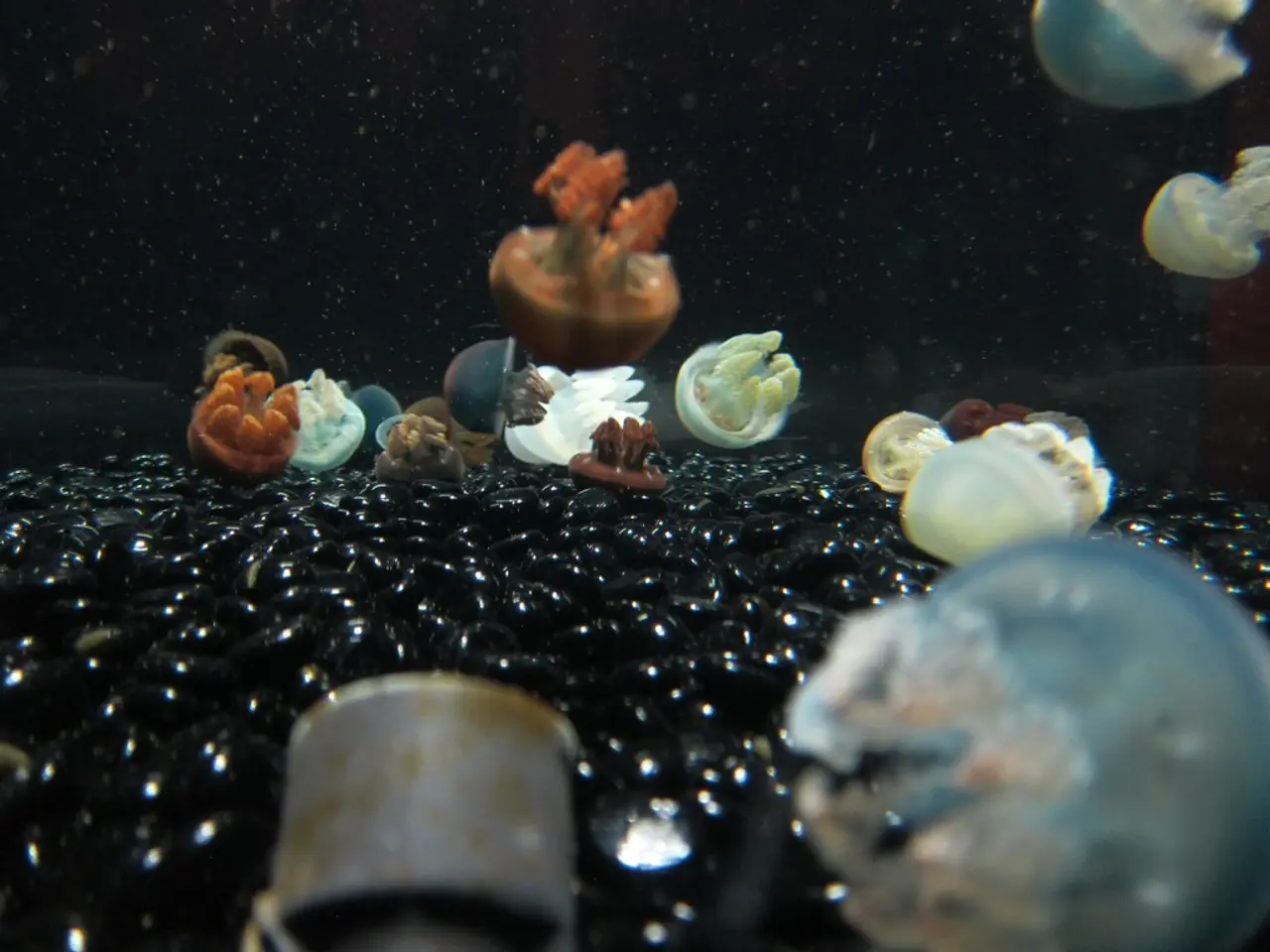Increase in jellyfish presence provokes irritation among Delaware beachgoers
The East Coast has been witnessing an unusual surge of jellyfish along its shores, with Delaware, Florida, Maine, and Massachusetts being particularly affected. The primary cause behind this phenomenon can be traced back to climate change and the warming of coastal waters, creating ideal conditions for jellyfish proliferation.
The warmer temperatures have influenced the breeding cycles of jellyfish species like lion's manes, sea nettles, and moon jellyfish, altering factors such as temperature, salinity, and food availability. As a result, these populations have been surging rapidly in these regions [1][2][3][5].
Ecologically, these blooms pose a threat to marine ecosystems. Jellyfish compete with fish for plankton, a crucial food source for many marine species. Furthermore, they act as an ecological dead end by consuming resources that would otherwise support other marine life, potentially altering food web dynamics and community structures [1].
Human activities have also been impacted, with a significant increase in jellyfish stings reported this summer. In some Delaware beaches, the number of stings has increased up to fourfold. These stings can cause pain and discomfort, sometimes severe enough to require urgent care. The fear of stings is even discouraging beachgoers from swimming, as families avoid the water after encounters [1][2][3].
Lifeguards are adapting to this new situation by carrying vinegar solutions to help ease pain from jellyfish stings. However, it's important to note that some remedies like vinegar may worsen stings [1][2][3].
Delaware State Beach Patrol started tracking jellyfish stings this year due to the rise in cases. Fenwick Island State Park reported 92 stings on a single July day. Similar events have been reported in Florida, Gloucester, Massachusetts, and Maine [1][2][3].
Research collaborators with the Smithsonian Institution National Museum of Natural History, like Keith Bayha, have been studying jellyfish for over 20 years and have identified a nettle species. Retired marine biologist Gisele Muller-Parker has observed an increase in lion's mane jellyfish during her daily walks at Lewes Beach in July [1].
However, it's crucial to note that once water temperatures cool, the jellyfish will die. In the absence of comprehensive jellyfish research, more work is needed to assess the ecological ramifications of jellyfish blooms and improve safety advisories [1].
In conclusion, the main cause of the East Coast jellyfish blooms is climate-driven warming waters, leading to ecological disruptions by altering marine food webs and human impacts through increased jellyfish stings and beach interruptions [1][2][3][5].
[1] Smithsonian Institution National Museum of Natural History [2] Delaware State Beach Patrol [3] Massachusetts Division of Marine Fisheries [4] Florida Fish and Wildlife Conservation Commission [5] Maine Department of Marine Resources
- The surge of jellyfish along the East Coast's shores, exacerbated by climate change, has resulted in an increase in jellyfish health-and-wellness issues for beachgoers, with a significant rise in stings.
- The warmer temperatures caused by climate change also affect environmental-science aspects, as they contribute to changes in factors such as temperature, salinity, and food availability, promoting the proliferation of jellyfish species like sea nettles and moon jellyfish, thereby disrupting marine ecosystems and food webs.




